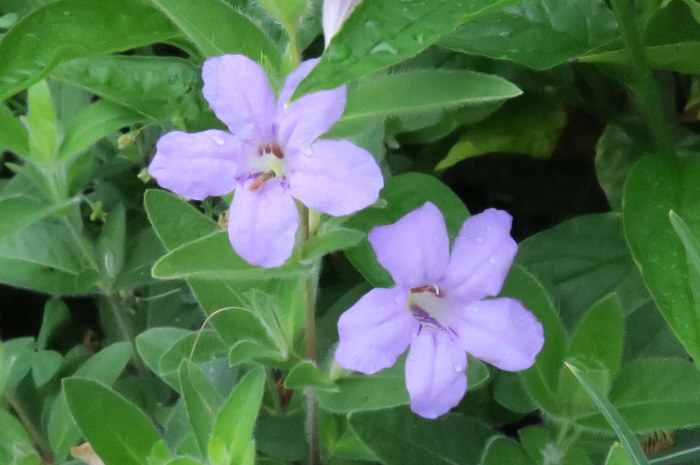If you’ve considered introducing native plants to a garden, today’s featured wildflower is for you. Wild petunia (Ruellia humilis) is “quite adaptable, tolerating full or partial sun, moist to dry conditions, and practically any kind of soil,” the Illinois Wildflowers website writes.
Sometimes known as fringeleaf wild petunia, this species is native to much of the U.S. east of the Rocky Mountains, except for New England.
I’ve seen these flowers thriving in several plantings near bike trails or parking lots. I took all of the pictures enclosed below in the main parking area at Brown’s Woods in West Des Moines.
The Illinois Wildflowers and Minnesota Wildflowers websites are good resources for botanically accurate description of wild petunia foliage, flowers, and fruit.
Years, ago, Iowa naturalist and photographer Leland Searles taught me the easiest way to distinguish the cultivated petunias from the native varieties. The petunias you see most often in gardens are in the nightshade family (Solanaceae) and have alternate leaves. Wild petunia is a member of the acanthus family (Acanthaceae) and has opposite leaves.
Here are some plants that aren’t blooming yet.
Incidentally, a related native plant is known as smooth wild petunia (Ruellia strepens). We can rule out that species here because its stems and leaves are either hairless or sparsely hairy.
Lots of wild petunia were blooming near the curb at Brown’s Woods. This is only a small part of the colony.
A closer look at some plants in bloom and others budding:
According to the Friends of the Eloise Butler Wildflower Garden website, “The genus, Ruellia, is named for the early French herbalist, Jean Ruelle (1474-1537). The species, humilis, is Latin for low-growing or humble, referring to the low height of this species.” Wild petunia plants typically reach a height of about one foot, although I’ve seen slightly taller plants.
What look like five petals on the flowers are in fact lobes. Here’s a closer look at one flower (it had rained a bit overnight).
In this picture, you can see a rear view of a flower, a blossom with lobes just opening up near the bottom, and a cluster of purple prairie clover in the background near the top of the frame.
The white flowers in the next shot are white avens.

Some rattlesnake master on the verge of blooming towers over this patch of wild petunia.








1 Comment
Lovely informative photos...
…and wild petunia does indeed have nice qualities for a yard planting. I’ve seen it escape a parking-lot planting and start to spread, modestly and slowly, across a little bit of the adjacent yard. Not aggressive or invasive at all, just willing to expand a bit, and so pretty.
PrairieFan Thu 2 Jul 3:35 PM